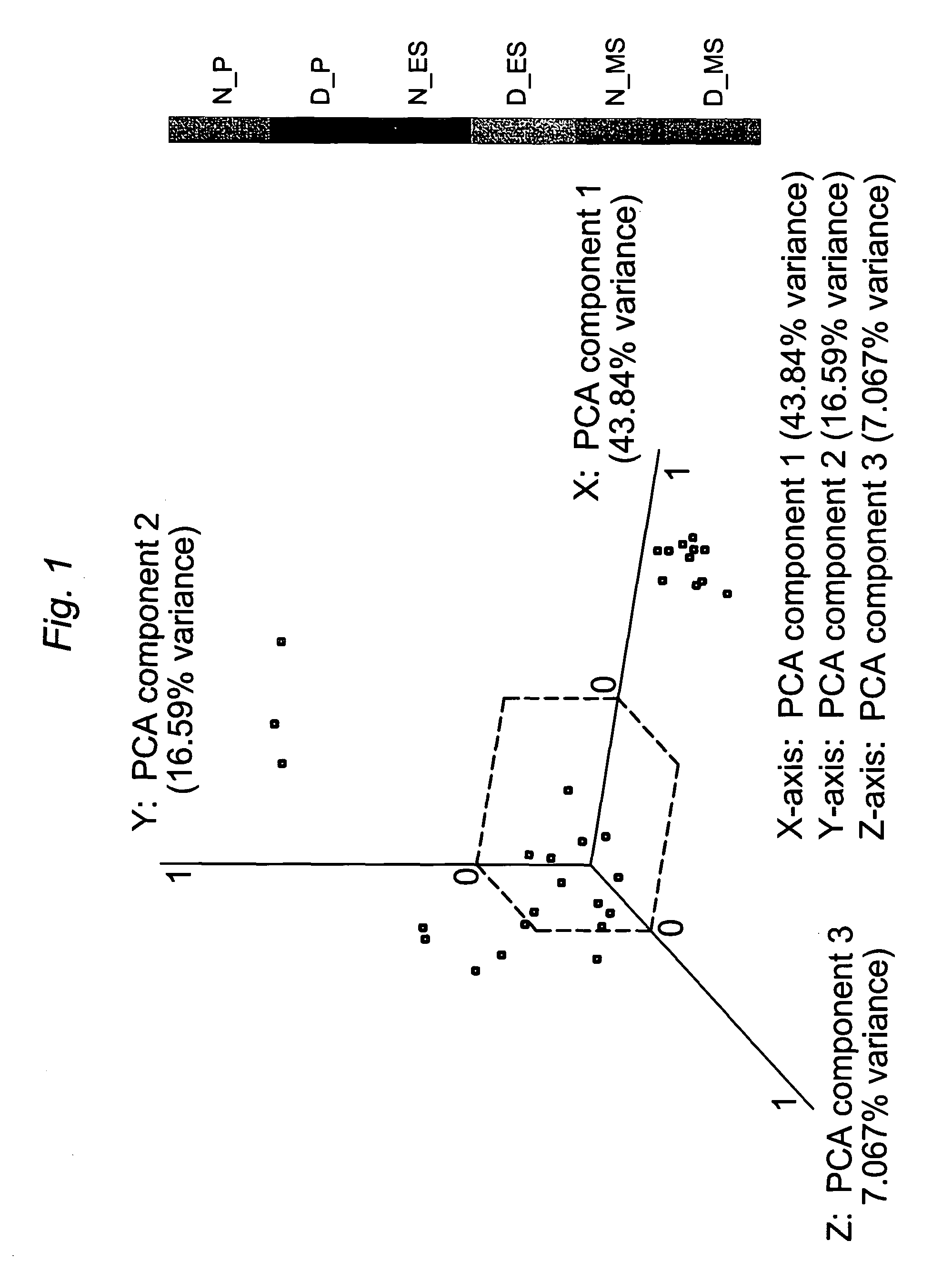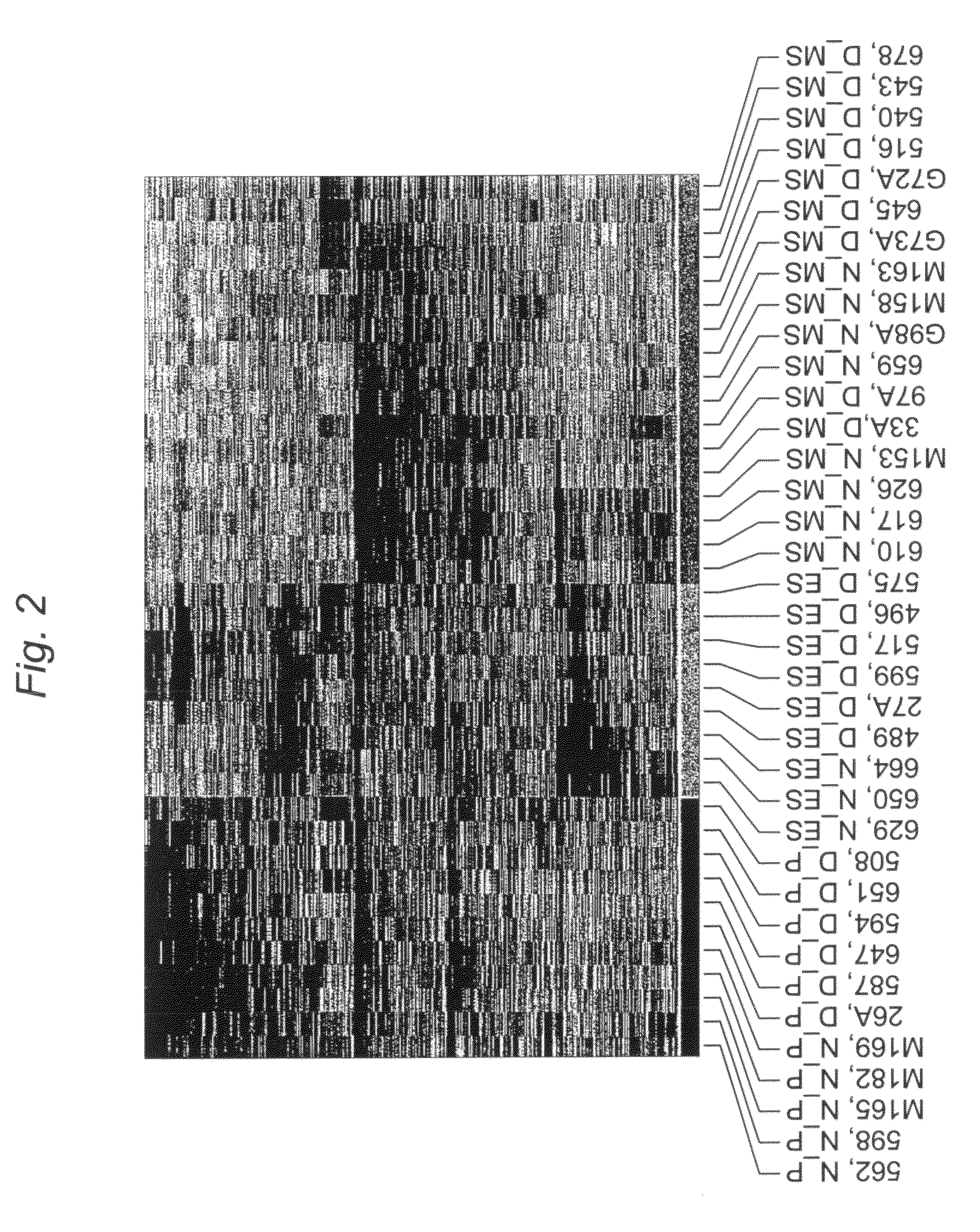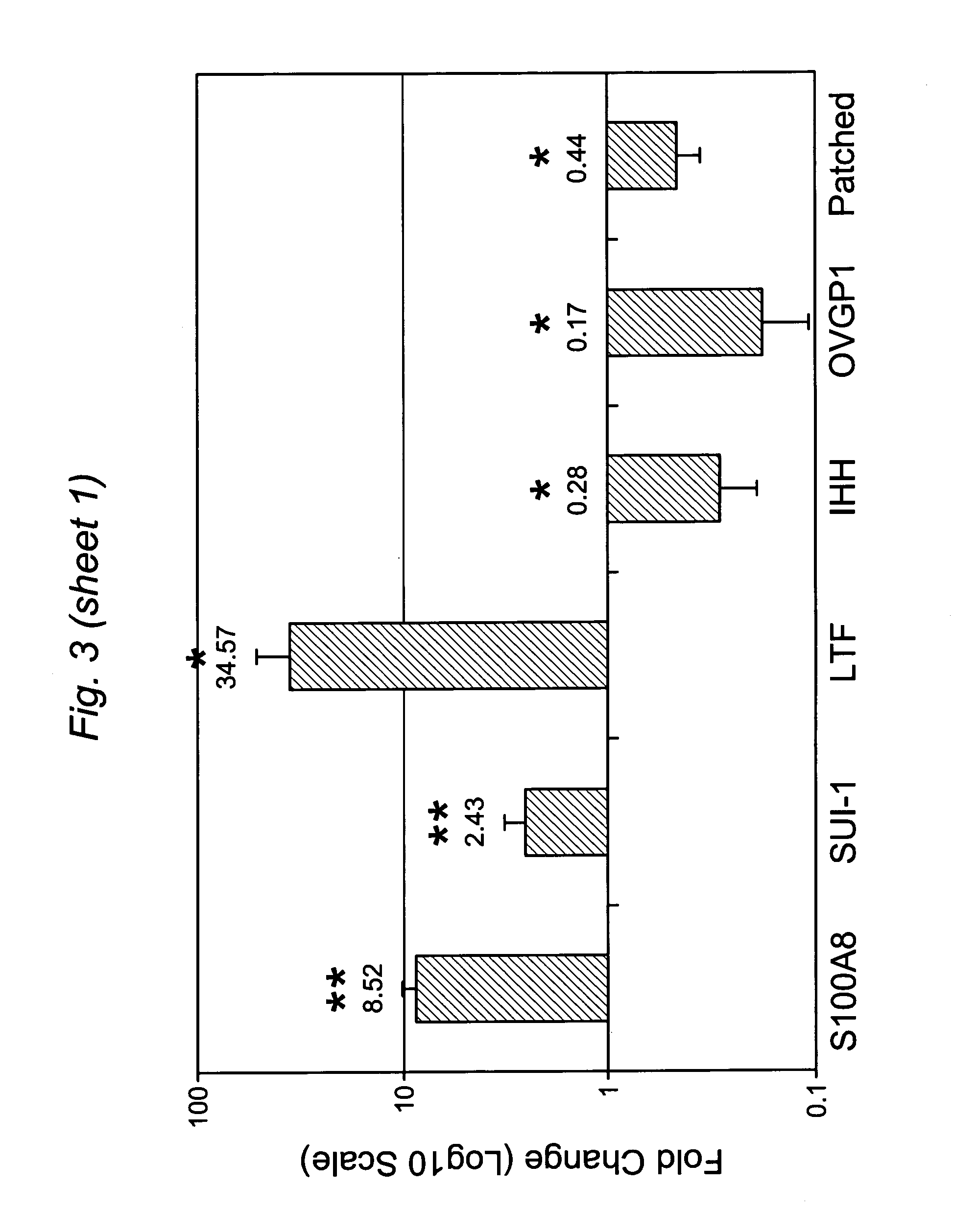Methods of diagnosing endometriosis
a technology of endometriosis and endometriosis, which is applied in the field of endometriosis diagnosis, can solve the problems of reducing the progesterone role in this disorder, failing to fully suppress pro-mmp-3, and reducing the ability of these tissues, so as to prevent or treat endometriosis or reduce fertility
- Summary
- Abstract
- Description
- Claims
- Application Information
AI Technical Summary
Benefits of technology
Problems solved by technology
Method used
Image
Examples
example 1
[0117]In this example, paralleled gene expression analysis was applied to investigate cycle phase-dependent differences in the eutopic endometrial gene expression signatures across the menstrual cycle of women with moderate / severe disease, compared to women without endometriosis. In women with moderate / severe disease, the gene expression profile suggested incomplete transitioning of the endometrium from the proliferative to early secretory phase, a phenotype of enhanced cellular survival, and attenuation of progesterone-induced down-regulation of DNA synthesis and cellular mitosis. Additionally, the secretory endometrium from women with disease demonstrated dysregulation of numerous genes known to be progesterone regulated. These results provide compelling molecular evidence for attenuated progesterone responsiveness within eutopic endometrium in women with endometriosis.
[0118]Endometriosis is a visually heterogeneous condition and studies have documented inaccuracy in its visual di...
example 2
[0163]This example investigates steroidogenic pathway enzymes in tissue and ESFs from women with and without endometriosis.
[0164]ESFs were isolated from endometrial biopsies from 15 women with and 7 women without endometriosis. After reaching confluence, cells were cultured with 1 μM P4 (after E2 100 nM priming) in a time course of short (3, 6, 48 hours) and long (14 days) term culture, and 0.5 mM of 8-bromo-cAMP for 96 hours. IGFBP1 and PRL protein secretion was measured by ELISA. Alterations in expression of some P4 and cAMP regulated genes (IGFBP1, PRL, FOXO1A, ERalpha, ERbeta, EBAF, somatostatin (SST), SST receptor 2, PRA, PRB) were determined by real-time quantitative (Q)RT-PCR. Purity of ESF populations at passage 2 was evaluated by immunohistochemistry using cytokeratin, vimentin and CD45 antibodies. Endometrial tissue biopsies were obtained from mid-secretory phase endometrium from 5 women without and 5 women with severe endometriosis. Regulation of steroidogenic enzymes StA...
example 3
[0169]The aetiology and pathogenesis of endometriosis are not well understood. Hic-5 (Unigene ID 513530), an adaptor-like nuclear receptor co-activator, also known as transforming growth factor beta 1 induced transcript 1 and androgen receptor coactivator ARA55, potentiates the activation of reporter genes by all steroid receptors (GR, AR, MR, and PR), except the ER, and is responsive to progesterone. This example shows that dysregulation of Hic-5 is involved in progesterone resistance in endometriosis.
[0170]Endometrial biopsies were obtained from mid-secretory phase endometrium from women without and with endometriosis: proliferative phase endometrium (PE) n=3 and n=4 respectively; early secretory endometrium (ESE) n=3 for both groups; mid-secretory endometrium n=5 for both groups; late secretory endometrium n=3 and n=4 respectively. Localization of Hic-5 protein was verified by immunofluorescence in full-thickness endometrial biopsies (FIG. 7). Endometrial stromal fibroblasts (ESF...
PUM
| Property | Measurement | Unit |
|---|---|---|
| Tm | aaaaa | aaaaa |
| temperatures | aaaaa | aaaaa |
| temperatures | aaaaa | aaaaa |
Abstract
Description
Claims
Application Information
 Login to View More
Login to View More - R&D
- Intellectual Property
- Life Sciences
- Materials
- Tech Scout
- Unparalleled Data Quality
- Higher Quality Content
- 60% Fewer Hallucinations
Browse by: Latest US Patents, China's latest patents, Technical Efficacy Thesaurus, Application Domain, Technology Topic, Popular Technical Reports.
© 2025 PatSnap. All rights reserved.Legal|Privacy policy|Modern Slavery Act Transparency Statement|Sitemap|About US| Contact US: help@patsnap.com



